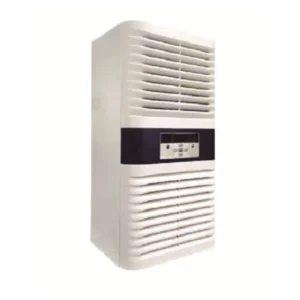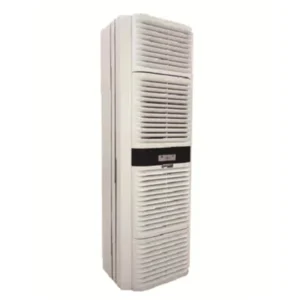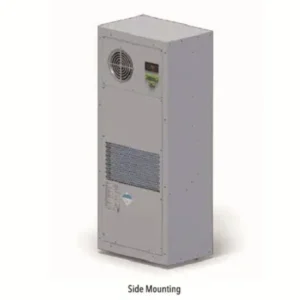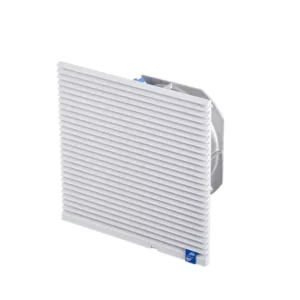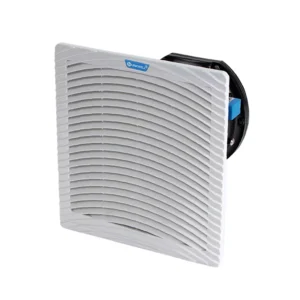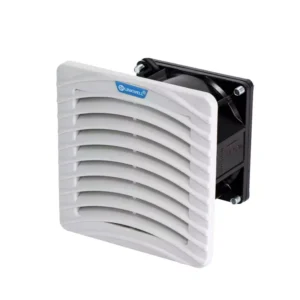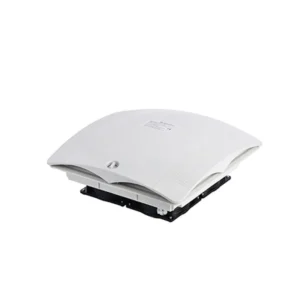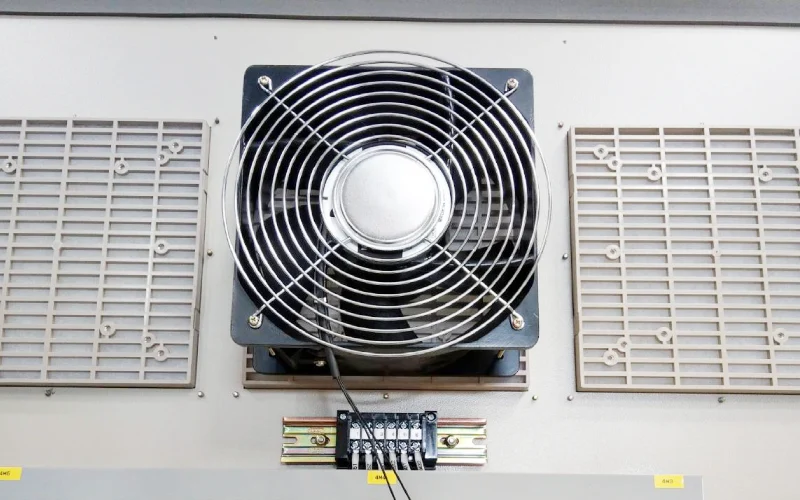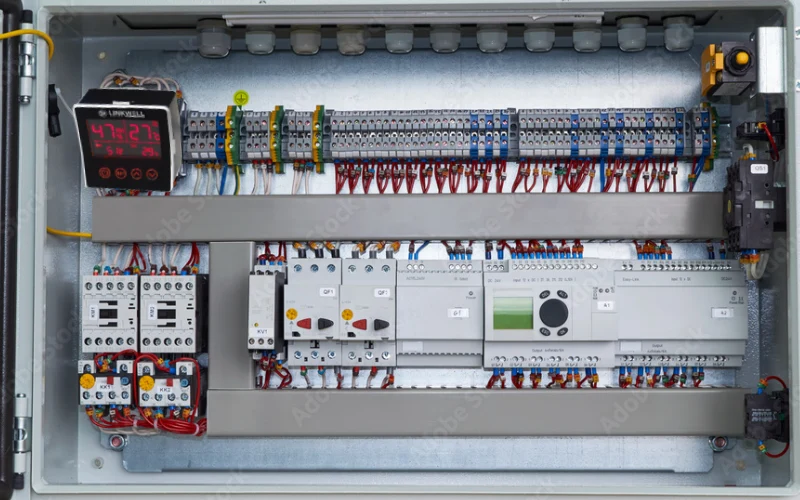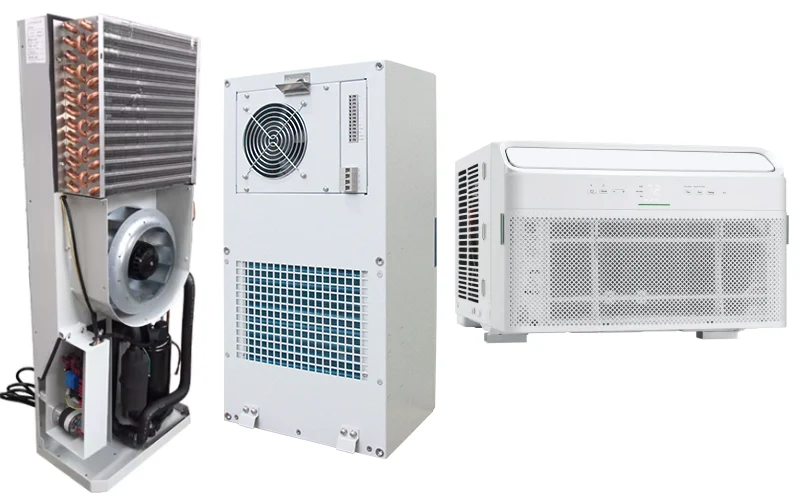If you want the best Telecom Cooling for your cabinet, you should know there’s no one-size-fits-all answer. Reliable cooling matters because overheating can shut down your network fast. Sometimes, a DC air conditioner works best in harsh, hot, or dusty places. Other times, a fan filter unit is perfect for mild, clean environments with lower heat loads.
Your choice depends on your local climate, cabinet size, and budget. Linkewell offers both options, so you can always find a solution that fits.
Key Takeaways
- Overheating in telecom cabinets and Network Switch Cabinet can cause equipment failure and network outages, so reliable cooling is essential.
- DC air conditioners provide strong, precise cooling for harsh, hot, or dusty outdoor environments but cost more and need skilled installation.
- Fan filter units work well in mild or indoor settings, use less energy, cost less upfront, and require simple maintenance.
- Choose your cooling solution based on cabinet size, location, heat load, and budget to protect your equipment effectively.
- Regular maintenance and monitoring help prevent overheating, extend equipment life, and keep your network running smoothly.
The Problem of Overheating in Telecom Cabinets

Causes of overheating
You might think a Telecom Shelter is safe once you close the door, but heat can build up fast inside. Here are some common reasons why cabinets overheat:
- Poor airflow blocks cool air from reaching hot spots.
- Blocked vents or failed fans stop air from moving, trapping heat.
- High outside temperatures push the cabinet’s internal temperature above safe limits.
- No real-time temperature sensors mean you don’t get alerts when things heat up.
- Humidity can speed up battery wear, making the cabinet even warmer.
- Sometimes, people tamper with cooling systems, which can make things worse.
If you don’t have good airflow or monitoring, heat sneaks up on you. That’s why many operators use temperature and humidity sensors to catch problems early.
Risks to telecom equipment
Heat is the enemy of your telecom gear. When temperatures climb, equipment starts to struggle. Here’s what can happen:
- Power supplies, amplifiers, and batteries can fail or shut down.
- Every time the temperature goes up by 18°F, your equipment’s life gets cut in half.
- Batteries lose backup power faster, and cooling system compressors can break from overwork.
- Overheating can cause network-wide outages and more maintenance calls.
Telecom electronics need stable temperatures. If you ignore heat, you risk expensive repairs and shorter equipment life.
Challenges in managing heat
Keeping cabinets cool isn’t always easy. You face a lot of challenges:
- Cabinets sit in all kinds of places, from busy city streets to remote outdoor sites.
- Outdoor cabinets deal with heat, storms, and even vandalism.
- New technology means more power in smaller spaces, which creates more heat.
- You need to balance cooling, noise, and looks, especially in public areas.
- Reliable Telecom Cooling is critical because failures can affect emergency services and cost a lot to fix.
Operators use active cooling like air conditioners and fan filter units to keep things running smoothly. Good thermal management helps your equipment last longer and saves you money on repairs.
Quick Comparison
When you look at Telecom Cooling options, you want to see the big picture fast. Here’s a handy table to help you compare DC air conditioners and fan filter units for your telecom cabinet:
| Feature | Fan Filter Unit (Linkewell) | DC Air Conditioner (Linkewell) |
|---|---|---|
| Performance | Good for mild heat, indoor/outdoor | High cooling power, handles harsh heat |
| Upfront Cost | Lower, usually under $3,000 | Higher, $3,000–$15,000+ |
| Installation | Simple, quick, basic tools | Complex, needs skilled installer |
| Energy Use | Low, very efficient | Higher, uses compressor and refrigerant |
| Maintenance | Minimal, clean/replace filter | More frequent, check filters and parts |
| Reliability | Great for clean, mild sites | Best for tough, hot, dusty places |
Performance
Fan filter units move air and filter dust, which works well if your cabinet sits in a mild climate or indoors. DC air conditioners give you much stronger cooling. They keep your equipment safe even when the sun beats down or the air gets sticky and hot.
Cost
You’ll notice a big price gap. Fan filter units cost much less upfront—often under $3,000. DC air conditioners can run from $3,000 to $15,000 or more. If you need to watch your budget, fan filter units make sense for basic Telecom Cooling.
Energy Use
Fan filter units use less power. They just spin a fan and push air through a filter. DC air conditioners need more energy because they use compressors and refrigerants to cool the air. If you want to save on electricity, fan filter units win.
Maintenance
You only need to clean or swap the filter on a fan filter unit. DC air conditioners need more attention. You’ll check filters, inspect parts, and sometimes call in a pro for service.
Installation
Fan filter units go in fast. You can use basic tools and get the job done quickly. DC air conditioners take more time and skill. You might need a specialist to install them right.
Reliability
Fan filter units work great in clean, mild spots. DC air conditioners shine in tough places—think outdoor cabinets, dusty sites, or anywhere heat is a real threat.
Tip: If your cabinet faces harsh weather or heavy sun, go with a DC air conditioner. For indoor or mild outdoor spots, a fan filter unit often does the trick.
DC Air Conditioners

Recommended products
Cooling Power
When you need serious cooling for your telecom cabinet, DC air conditioners deliver. These units come in a range of cooling capacities, so you can match the right size to your cabinet’s heat load. Most DC air conditioners for telecom cabinets offer cooling from 300 Watts up to 2000 Watts. For example, a 500W unit gives you about 1700 BTU/hr, which is perfect for many outdoor telecom setups. You want to pick a model that covers your equipment’s heat output, plus a little extra for safety. This way, your cabinet stays cool even when the weather gets hot or your gear works overtime.
| Cooling Capacity (W) | BTU/hr |
|---|---|
| 300 | 1023 |
| 500 | 1706 |
| 800 | 2730 |
| 1000 | 3412 |
| 1500 | 5118 |
| 2000 | 6824 |

Targeted Cooling for Enclosed Spaces
You want your cooling system to focus on the right spot. DC air conditioners do just that. They use precise voltage and current control to keep your cabinet at a steady temperature. Unlike regular room air conditioners, these units target the small, enclosed space inside your telecom cabinet. This means your equipment always stays within safe thermal limits. DC air conditioners also cut down on wasted energy by reducing power losses. Their compact design fits tight spaces, so you don’t have to worry about bulky equipment. You get reliable cooling, even in remote or off-grid locations.
- DC air conditioners maintain steady temperatures with smart controls.
- They fit perfectly in small cabinets, making installation easy.
- These units use energy efficiently, especially when powered by solar or batteries.
- You get active cooling and air quality control, not just passive airflow.
Environmental Fit
Outdoor Telecommunication Enclosure face tough conditions. You might deal with rain, dust, wind, or even sandstorms. DC air conditioners are built for these challenges. Most models have an IP55 or higher rating, which means they block out dust and water. Manufacturers use stainless steel or galvanized steel to handle harsh weather. These units keep out moisture and corrosive gases, so your electronics stay safe. Some models work in extreme temperatures, from -40°C up to 55°C. You can trust them to protect your equipment, no matter where you install your cabinet.
Efficiency
Energy efficiency matters, especially if you run cabinets in remote areas or want to save on power bills. DC air conditioners use inverter technology and variable speed compressors. This means they only use as much energy as needed, instead of running full blast all the time. The Energy Efficiency Ratio (EER) and Coefficient of Performance (COP) are both high for these units. Some advanced models even use heat recovery and smart energy management to boost efficiency by over 30%. You get more cooling for every watt you use.
| Cooling Capacity (W) | COP Increase (Heat Pipe Mode, %) | COP Increase (Vapor Compression Mode, %) |
|---|---|---|
| 8000 | 30.11 | 74.65 |
| 6400 | 13.52 | 82.12 |
| 4800 | 6.30 | 90.97 |
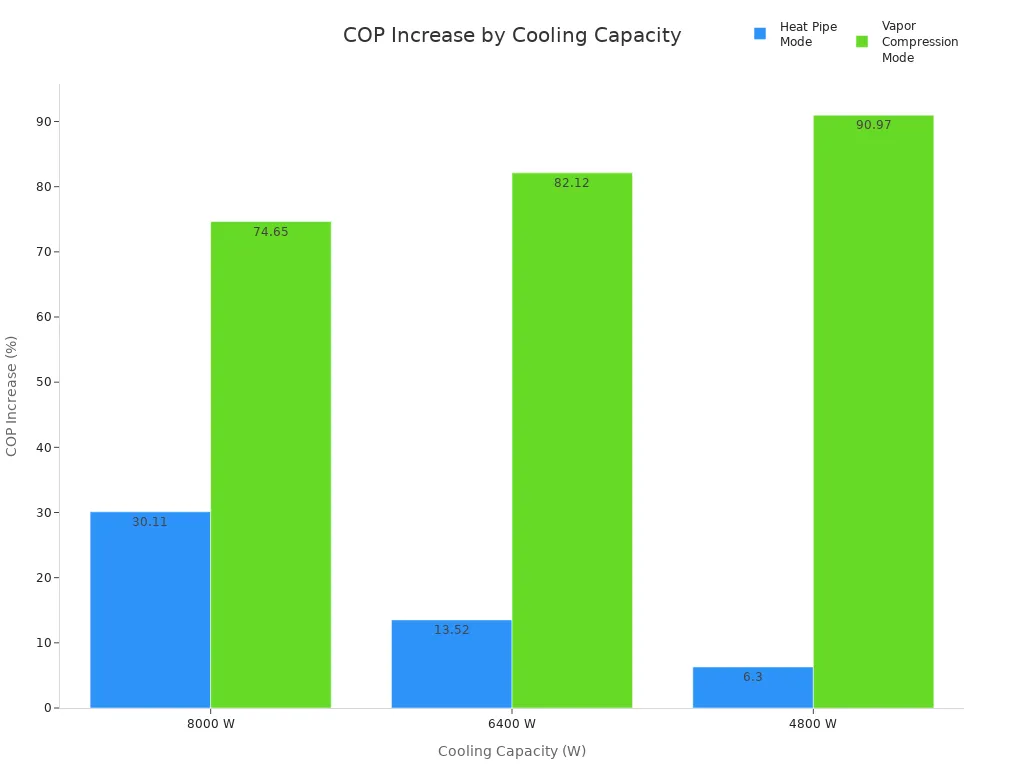
Tip: Fixing duct leaks and using condensate water spraying can make your cooling system even more efficient.
Maintenance
You want your telecom cabinet to run smoothly with as little downtime as possible. Regular maintenance is key. With DC air conditioners, you should check and clean the filters, especially during hot months. Inspect the unit for dust, debris, or leaks. Make sure the temperature sensors and digital controls work properly. Advanced monitoring tools can alert you to problems early, so you can fix them before they cause trouble. Keeping up with maintenance helps prevent overheating and keeps your network online.
- Clean filters and check for debris regularly.
- Inspect cooling equipment before summer heat waves.
- Use monitoring tools for early problem detection.
- Good maintenance means fewer failures and more uptime.
Cost Factor
DC air conditioners cost more upfront than fan filter units. You pay for advanced technology, higher cooling power, and rugged construction. However, you save money over time. These units use less energy, last longer, and protect your equipment from costly failures. If you run cabinets in harsh or remote locations, the investment pays off by reducing downtime and repair costs.
How DC Air Conditioners Work
Let’s break down how these units keep your cabinet cool:
- Temperature sensors inside the cabinet watch for rising heat.
- When it gets too warm, the DC air conditioner turns on.
- The evaporator coil inside the cabinet absorbs heat from the air.
- The refrigerant in the coil evaporates, carrying heat away.
- The compressor (powered by 48V DC) moves the hot refrigerant to the condenser outside.
- The condenser releases the heat to the outside air.
- The cooled refrigerant cycles back to the evaporator, and the process repeats.
- Air circulates inside the cabinet, keeping the temperature even.
This closed-loop system keeps outside air, dust, and moisture from getting in. You get precise temperature control, even if the weather outside changes.
Targeted Cooling for Enclosed Spaces
You need cooling that works exactly where your equipment sits. DC air conditioners give you that. They focus all their power on the inside of your cabinet, not the room around it. This means your sensitive electronics stay cool and safe, even if the sun is beating down or the air is full of dust. You get peace of mind knowing your network won’t go down because of heat.
Benefits of DC Air Conditioners for Telecom Cabinets
- Run directly on batteries or solar panels—no inverter needed.
- Save energy with efficient compressors and smart controls.
- Protect against harsh weather, dust, and moisture.
- Extend the life of your telecom equipment by preventing overheating.
- Fit easily into tight cabinet spaces.
- Use eco-friendly refrigerants for a smaller environmental footprint.
- Support remote monitoring and alarms for easy management.
DC Air Conditioners vs Traditional AC Units
Let’s see how DC air conditioners stack up against traditional AC units:
| Metric | DC Air Conditioner (Inverter) | Traditional AC (Fixed-speed) |
|---|---|---|
| Average daily energy use | ~11.6 kWh/day | ~20.8 kWh/day |
| Annual energy use (300 days) | ~3,471 kWh/year | ~6,230 kWh/year |
| Energy savings | Up to 44% less | — |
| Compressor type | Variable speed | Fixed speed |
| COP (efficiency) | >3.0 | Lower |
| Noise level | Quieter | Louder |
| Cooling control | Steady | On/off cycling |
You get up to 44% energy savings with DC air conditioners. They run quieter, provide steadier cooling, and work better with solar or battery power. Even though they cost more upfront, you save money in the long run.
Why DC Air Conditioners Are the Superior Choice
If you want the best protection for your telecom cabinet, DC air conditioners stand out. They combine high cooling power, energy efficiency, and rugged design. Linkewell DC air conditioners meet strict international standards like IEEE 1584, IEC 61482, and MIL-STD-810. You get safety features like circuit breakers, surge protection, and advanced filtration. These units work quietly, support smart controls, and keep your equipment safe in any environment. When you need reliable Telecom Cooling for harsh, outdoor, or high-heat sites, DC air conditioners are the top choice.
Fan Filter Units

Recommended products
Airflow
You want your telecom cabinet to stay cool and clean. Fan filter units help you do just that by moving fresh air through your cabinet and pushing out the hot air. These units use a fan to pull in outside air, which passes through a filter before reaching your equipment. This process keeps dust and moisture away from your sensitive electronics.
Fan filter units come in different sizes and airflow capacities. Smaller models, which are common in telecom cabinets, usually provide airflow between 40 and 60 m³/h (about 25 to 37 CFM). If you need more power, larger units can deliver up to 1200 m³/h. Here’s a quick look at typical airflow rates:
| Fan Filter Unit Model | Airflow Rate (m³/h) | Airflow Rate (CFM) |
|---|---|---|
| Filter fan – size 2 (230 V) | 42 to 55 | 25 to 32 |
| Filter fan – size 2 (120 V) | 48 to 63 | 28 to 37 |
| Larger/cleanroom-grade units | 600 to 1200 | 353 to 706 |
You can pick the right size for your cabinet, so you get just the right amount of airflow.
Suitability
Fan filter units work best in mild climates or indoor spaces. If your telecom cabinet sits in an office, a server room, or a shaded outdoor spot, these units are a smart choice. They handle lower heat loads well and keep your equipment safe from dust and debris. You might use them for:
- Indoor telecom cabinets
- Control panels in factories
- Battery cabinets in clean environments
- Server racks in data centers
If your site faces extreme heat, heavy rain, or lots of dust, you might want to look at other Telecom Cooling options. But for most indoor or mild outdoor spots, fan filter units do the job.
Energy Savings
You care about saving energy and cutting costs. Fan filter units help you do both. They use efficient motors and only need a small amount of power to run. Because they don’t use compressors or refrigerants, they keep your energy bills low. Many models, like those from Linkewell, use ball bearing motors and smart thermostats. This means the fan only runs when your cabinet gets warm, so you don’t waste electricity.
Tip: If you want to boost energy savings, pair your fan filter unit with a thermostat. The fan will turn on only when needed, which saves even more power.
Upkeep
You want a cooling solution that’s easy to maintain. Fan filter units make your life simple. You just need to check the filter every few months and swap it out when it gets dirty. In clean areas, you might only change the filter twice a year. In dusty places, check it more often—maybe every month or two. Linkewell’s fan filter units use long-lasting ball bearing motors, so you don’t have to worry about frequent repairs.
Here’s what you’ll do for upkeep:
- Inspect and replace filters as needed
- Wipe down the fan housing
- Check for any blockages or debris
You don’t need special tools or training. Most people can handle maintenance in just a few minutes.
Budget
Fan filter units help you stick to your budget. They cost much less than air conditioners, both to buy and to run. You get reliable Telecom Cooling without a big upfront investment. Linkewell’s fan filter units come with CE and RoHS certifications, so you know you’re getting quality at a fair price. You also save money over time because these units use less energy and need less maintenance.
If you want a cost-effective way to keep your telecom cabinet cool and clean, fan filter units are a great pick. You get peace of mind and protect your equipment without breaking the bank.
Telecom Cooling Decision Guide
Choosing the right Telecom Cooling solution can feel overwhelming, but you can break it down step by step. Let’s walk through the main factors you should consider before making your decision.
Cabinet Size
Start by looking at the size and shape of your telecom cabinet. A small cabinet with a wide, short design often works well with a fan filter unit. If you have a tall, narrow cabinet or a large enclosure packed with equipment, you might need a side-mounted or top-mounted DC air conditioner. Bigger cabinets usually have more surface area, which helps with heat conduction, but they also generate more heat. Linkewell offers both compact fan filter units and powerful cabinet air conditioners to fit any cabinet size.
Location
Think about where your cabinet sits. Is it indoors, in a clean office or server room? Or is it outside, exposed to sun, rain, dust, or even salty coastal air? For mild, indoor environments, a fan filter unit is usually enough. If your cabinet faces harsh weather, high humidity, or extreme temperatures, you need active cooling. DC air conditioners from Linkewell are built for tough outdoor sites, deserts, and coastal areas. They keep your equipment safe by blocking out dust and moisture while maintaining a stable temperature.
Heat Load
Check how much heat your equipment produces. Add up the power consumption of all devices inside the cabinet, then factor in extra heat from sunlight or nearby machines. Industry best practice says you should pick a cooling system that can handle your total heat load plus about 20% more. For example, if your cabinet gets up to 116 °F, you want a system that brings it down to around 95 °F. Linkewell’s DC air conditioners and fan filter units come in different capacities, so you can match the right model to your needs.
Budget
Budget matters for every project. If you need a cost-effective solution for a small or less demanding cabinet, fan filter units are a smart pick. They’re affordable, easy to install, and low on maintenance. For larger projects or harsh environments, you might need to invest more in a DC air conditioner. These units cost more upfront but deliver precise cooling and long-term protection. Linkewell’s product range covers both ends, so you can find a solution that fits your budget and performance needs.
Tip: Always consider the total cost of ownership, not just the purchase price. Reliable cooling saves you money by preventing equipment failures and downtime.
Real-World Scenarios
Outdoor Cabinets
Picture your telecom cabinet sitting outside, exposed to blazing sun, rain, and dust. You need a cooling solution that stands up to the elements. Linkewell’s DC air conditioners work perfectly here. These units have high IP ratings, so they keep out water and dust. You get reliable cooling even during heat waves or storms. If your site runs on solar or battery power, you can choose a DC model that fits right in.
Note: Outdoor cabinets face the harshest conditions. DC air conditioners protect your equipment and keep your network running strong.
Indoor Cabinets
You might have cabinets inside an office, data center, or equipment room. These spaces usually stay clean and have stable temperatures. In this case, a Linkewell fan filter unit is a smart choice. It moves air through the cabinet and filters out dust. You save on energy and maintenance. Installation takes just a few minutes, so you get up and running fast.
Dusty Sites
Some locations, like factories or roadside cabinets, deal with a lot of dust and debris. You want to keep that dust away from your electronics. Linkewell offers fan filter units with high-grade filters and IP ratings. These units block out dust while keeping your cabinet cool. For extreme dust or outdoor sites, you can pair a DC air conditioner with advanced filtration for extra protection.
- Choose a fan filter unit for moderate dust.
- Pick a DC air conditioner with sealed design for heavy dust.
Cost-Sensitive Projects
Sometimes, your budget is tight. You still need to protect your equipment. Linkewell’s fan filter units give you solid performance at a lower price. They use less energy and require little maintenance. If you need to cool several cabinets or want a quick upgrade, these units help you stay on budget without sacrificing reliability.
Tip: Always match your cooling solution to your site’s needs. Linkewell has options for every scenario.
Choosing the right Telecom Cooling solution depends on your cabinet’s size, location, and heat load. If you deal with harsh weather or high heat, you’ll want a DC air conditioner. For mild or indoor spots, a fan filter unit works well. Always check your site’s needs before you decide. If you need help, reach out to Linkewell for expert advice and the best products for your project.
FAQ
What’s the main difference between a DC air conditioner and a fan filter unit?
A DC air conditioner cools your cabinet using a compressor and refrigerant. A fan filter unit moves air through a filter to lower the temperature. You get stronger cooling from a DC air conditioner, while a fan filter unit works best in mild conditions.
How do I know which cooling solution fits my telecom cabinet?
Check your cabinet’s size, location, and heat load. If you face harsh weather or high temperatures, pick a DC air conditioner. For indoor or mild spots, a fan filter unit usually does the job. You can always ask Linkewell for advice.
How often should I maintain my cooling system?
For fan filter units, check and replace filters every few months.
For DC air conditioners, clean filters and inspect parts regularly—especially before hot seasons.
Regular maintenance keeps your equipment safe and running smoothly.
Can I install these cooling units myself?
You can install most fan filter units with basic tools. DC air conditioners need more skill and sometimes a professional installer. Always follow the instructions in the manual for the best results.
Do Linkewell cooling products support remote monitoring?
Yes! Many Linkewell DC air conditioners offer digital controls and remote monitoring features. You can track temperature, get alerts, and manage your cabinet’s climate from anywhere.
Conclusion
Choosing the right Telecom Cooling system protects your network, saves energy, and extends equipment life. Whether you need a heavy-duty DC air conditioner for outdoor sites or a cost-effective fan filter unit for indoor cabinets, Linkewell offers smart solutions that match your needs.
Our cooling products are built to handle tough environments, and our team is ready to help you pick the right model based on your cabinet size, location, and budget. With trusted performance, industry certifications, and global support, you get more than just a product—you get long-term reliability. Don’t wait until heat causes failure. Contact Linkewell today for expert advice, fast delivery, and reliable telecom cabinet cooling you can count on.

